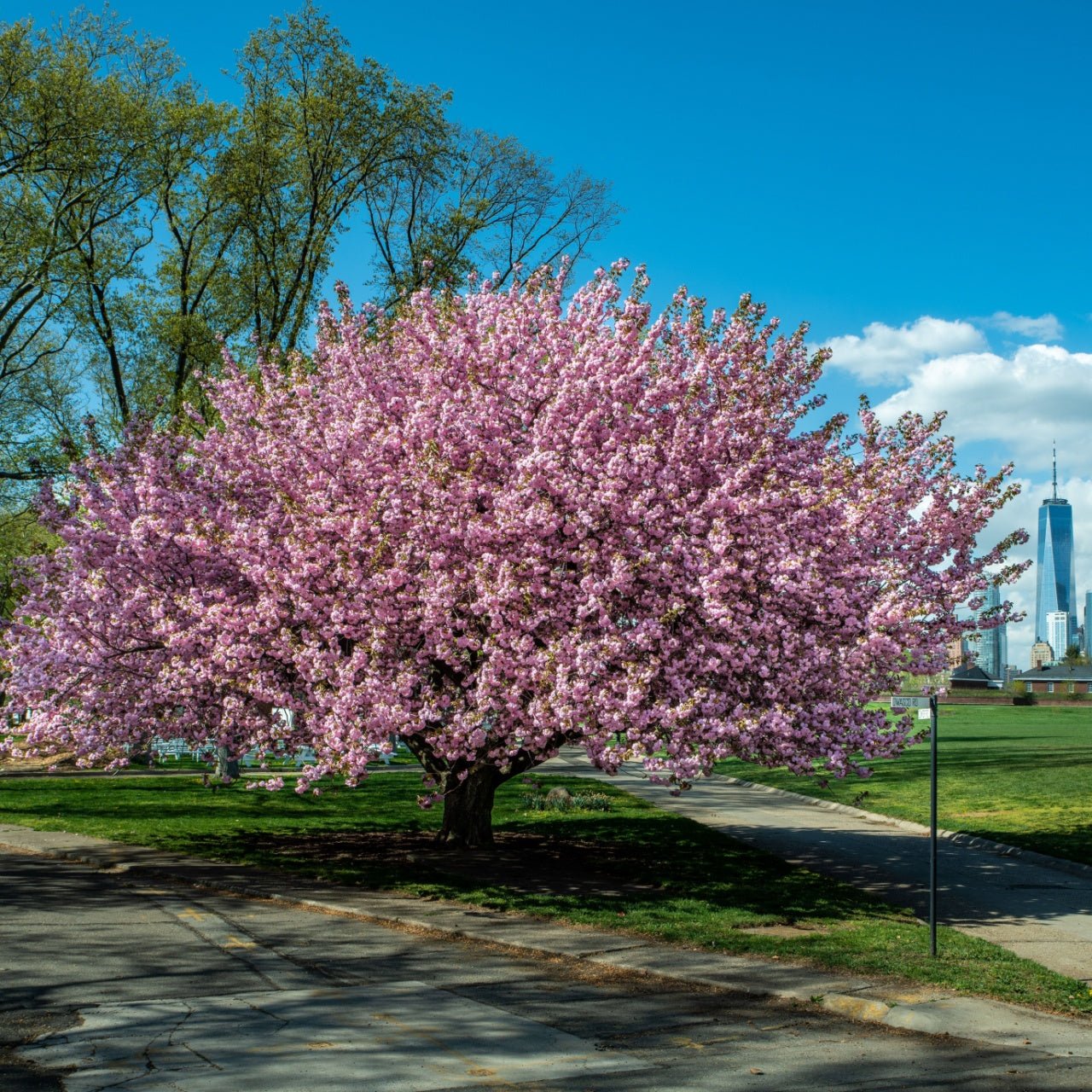


Corkscrew Willow
Fast-growing tree provides quick shade
Tolerates various soil types
Low-maintenance and drought-resistant
Thrives in
ZONE 4ZONE 5ZONE 6ZONE 7ZONE 8This plant ships:
November 20251 Year Guarantee on all plants
Corkscrew Willow - Salix matsudana
The Corkscrew Willow is a wonderful tree whose long, sweeping foliage creates our classic “weeping willow” look that everyone enjoys. However, it gets its name ‘corkscrew’ from its curly leaves and similarly curly branches – a very unique phenomenon! The branches curve horizontally and fork vertically, which gives it a distinct look sure to be a great centerpiece in your garden scape.
Plant Details - Corkscrew Willow
Family: Salicaceae
Light Requirement: Full sun
Water Needs: Moderate
Height: 30-40 ft
Spread: 15-20 ft
Growth Rate: Rapid
Soil Preference: Moist
Season of Interest: Spring
Flower Color: Yellow-green
Fruit: Brown seed pods
Wildlife Value: Habitat for birds and small mammals, soil stabilizer in wet areas
Notable Characteristics - Corkscrew Willow
The Corkscrew Willow is easily identifiable by its curved branches and leaves. The contortion increases with vigor so the common practice of pollarding, which is when trees are pruned back to the main trunk to encourage new growth, often causes it to curl even more dramatically. The wood is famously soft and flexible, making it good for basket weaving as well as for furniture and other carpentry. Similarly, the bark is thin and delicate. The tree has long, thin branches that hang low to the ground, drooping over themselves shortly after they leave the main trunk. Its muted green leaves are similarly drooping, as they are oblong and thin, helping them fall easily to the ground even in their semi-curly state.
Landscape and Maintenance
This weeping tree is an east asian native, specifically China and Korea. The plant was first introduced to the United States in the early 1900s, and has since become naturalized in many areas. The tree is more drought tolerant than other willow varieties, helping it survive in more varied climatic environments across the United States. The Corkscrew Willow has year round interest, sprouting inconspicuous yellow-green flowers in the spring and large yellow-brown seed pods in summer. In the fall and winter, the curly leaves fall off to reveal the even curlier woodwork beneath, making it a mysterious and haunting winter specimen for your garden.
This Is How Your Plants Will Look upon Delivery

Height at Maturity
Over 25 Feet
Care
Corkscrew Willow thrives in well-drained soil and needs regular watering, especially during dry periods. It should be pruned annually to maintain its twisted branches and prevent overcrowding. Watch out for pests like aphids and address infestations promptly to keep the tree healthy.
Plant Reproduction
Corkscrew Willow spreads via seeds, suckers, and root expansion
Plant bare root trees during the dormant season in early spring or late fall (November through April). Dig the hole twice as wide as the roots so the soil is well-drained. Position the tree so the root flare is at or just above ground level. Fill the hole back with the soil you dug from and water. Maintain soil moisture, especially in the tree's early years, by providing deep, regular watering. Apply a 2-4 inch mulch away from the trunk at the base to retain moisture and suppress weeds. Prune trees during the first few seasons to establish strength and resilience, remove damaged branches, and continue maintenance pruning as the tree matures. Regularly inspect for pests and diseases and apply integrated pest management practices. Protect young trees from mechanical damage and extreme temperatures with tree guards, and stake them if necessary for support, removing the stakes after one or two years.
Shipping date depends on the date displayed and chosen when you order from the product's page.
We only accept returns on plants verified dead. If you think your plants have died, we offer a 1 year warranty, please use this File a Claim Link to verify dead plants and start with return warranty process.





Unique Twisting Branches:
The Corkscrew Willow boasts distinctive, twisting branches that add a striking visual element to any garden. Its unusual growth pattern makes it a conversation starter and a focal point in landscape design.
Adaptability:
Corkscrew Willow trees are highly adaptable and can thrive in a variety of soil types, including wet and poorly drained soils. This makes them a versatile addition to many different types of landscapes.
Fast Growth Rate:
This tree is known for its rapid growth, providing quick shade and privacy. If you need a tree that will establish itself and enhance your garden swiftly, the Corkscrew Willow is an excellent choice.
Bird-Friendly:
The Corkscrew Willow’s branches provide excellent shelter and nesting sites for birds, making it a great addition to wildlife-friendly gardens. Enjoy the added benefit of attracting and supporting local bird species.
Caring Tips
How do I care for my Corkscrew Willow?
Each box contains detailed care instructions and information about your product. But here's the basics.
Care Tips
Corkscrew Willow thrives in well-drained soil and needs regular watering, especially during dry periods. It should be pruned annually to maintain its twisted branches and prevent overcrowding. Watch out for pests like aphids and address infestations promptly to keep the tree healthy.
Light Requirements
Corkscrew Willow thrives best in total sun to a bit of shade, needing at least 4-6 hours of natural sunlight daily for optimal growth. In shadier conditions, its twisted branches may develop less prominently.
Hardy Planting Zones
4 • 5 • 6 • 7 • 8
Header
Use this content to share information about your store and products.
Frequently Asked Questions
How often should I water my plants?
How do I know if my plant is getting too much or too little sunlight?
What should I do to prepare my plants for winter?
What are the signs that my plant needs fertilizing?
How can I prevent pests from damaging my plants?
How do I choose the right plant for my climate zone?






